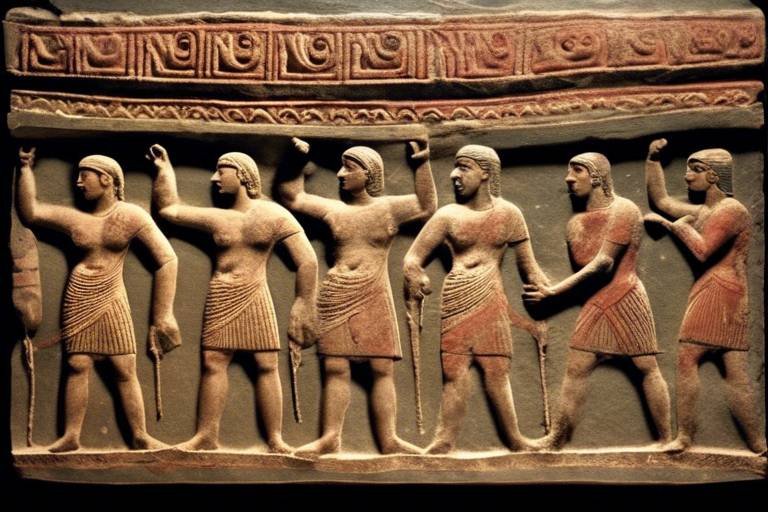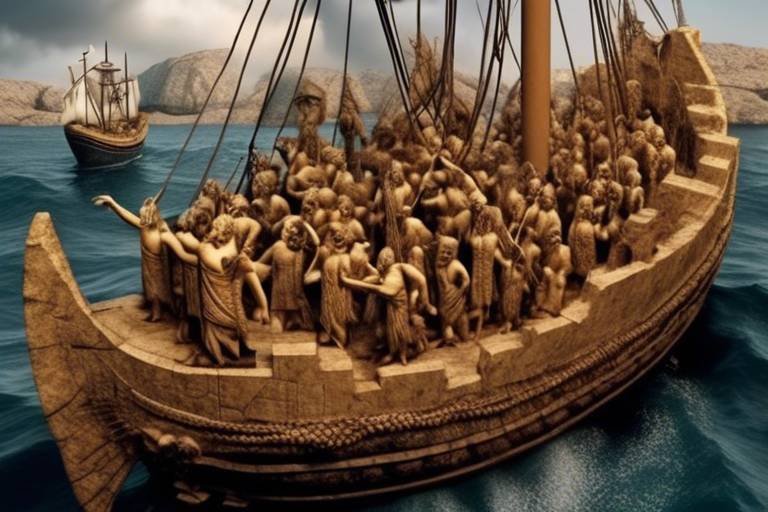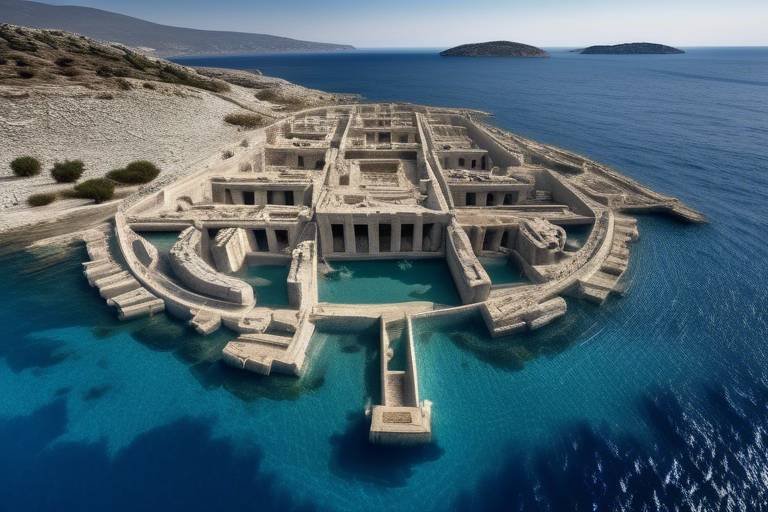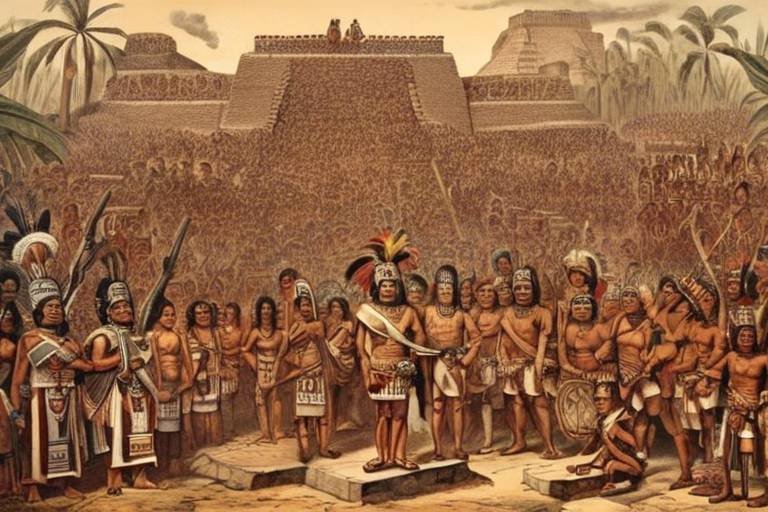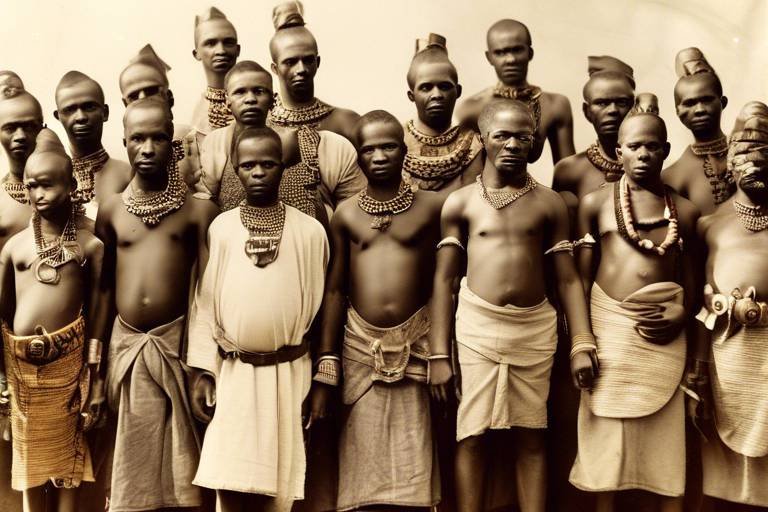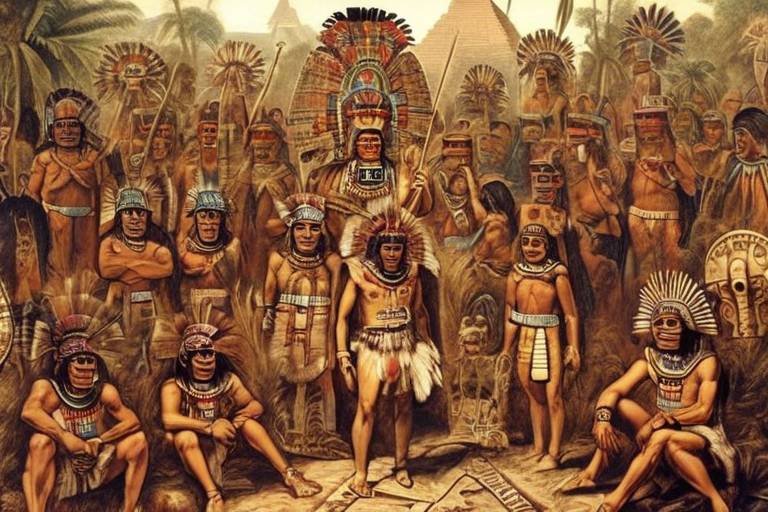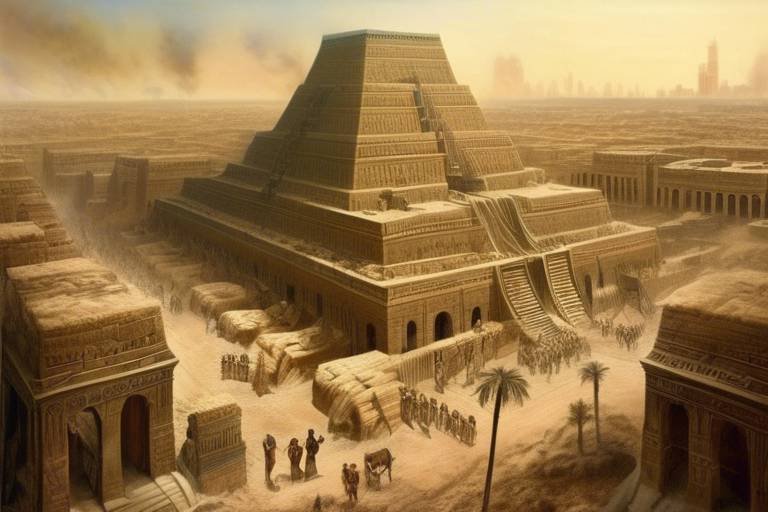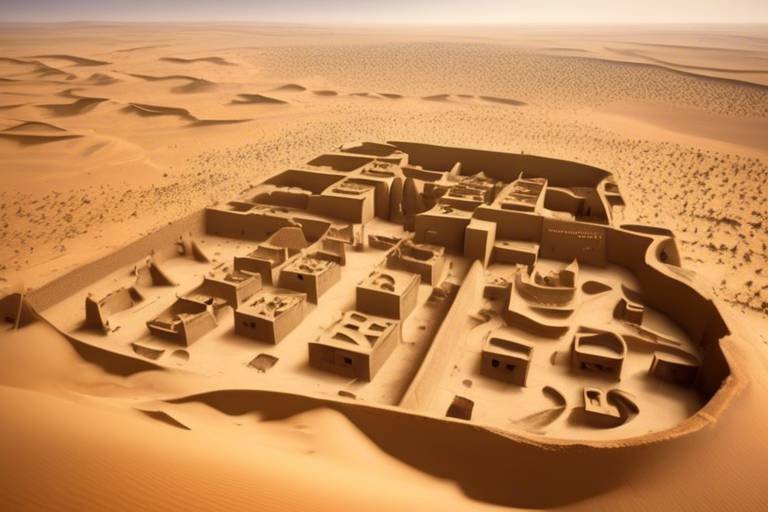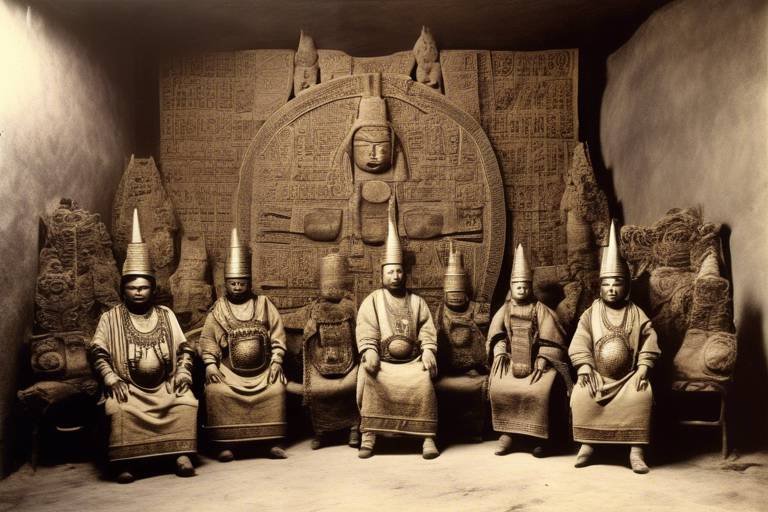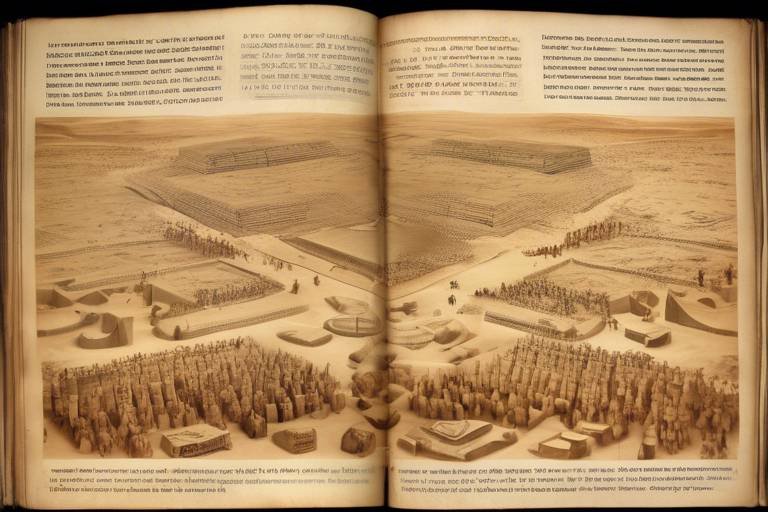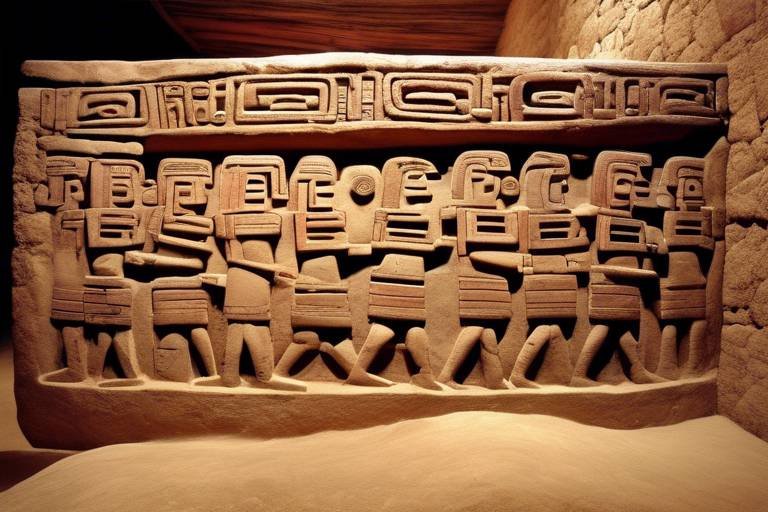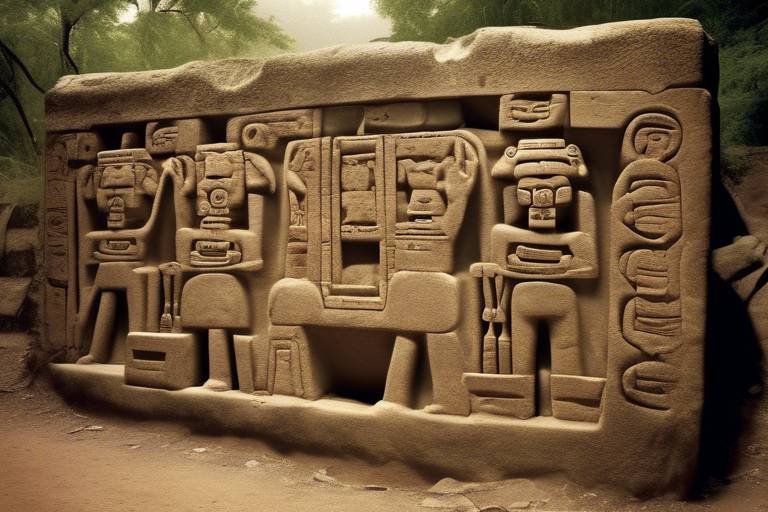The Forgotten Achievements of the Etruscans
The Etruscans, an ancient civilization in Italy, left behind a legacy of remarkable achievements that have often been overlooked in historical narratives. Despite their profound influence on Roman culture, the Etruscans' contributions in various fields such as art, architecture, engineering, trade, and religion are not widely recognized.
One of the most notable aspects of Etruscan civilization is their artistic prowess. Their art, characterized by vibrant frescoes, intricate gold jewelry, and detailed pottery, reflects a high level of skill and creativity across different mediums. These artistic expressions provide valuable insights into the cultural richness of the Etruscans.
Furthermore, the Etruscans were renowned for their architectural marvels, evident in the grand structures that adorned their cities. The necropolises of Cerveteri and Tarquinia stand as testaments to their architectural ingenuity and urban planning skills, showcasing a blend of beauty and functionality.
In the realm of engineering, the Etruscans demonstrated remarkable ingenuity through the construction of elaborate underground tombs and sophisticated drainage systems. Their advanced engineering techniques highlight their practical knowledge and innovative approach to infrastructure development.
Thriving on their strategic geographical location, the Etruscans excelled in trade and commerce, establishing extensive networks across the Mediterranean. Their trade relationships facilitated the exchange of luxury goods and ideas, contributing to the economic prosperity of the region and influencing neighboring cultures.
Religion played a central role in Etruscan society, shaping their beliefs, rituals, and social structure. Their religious practices, focused on divination and the afterlife, not only influenced their governance but also had a lasting impact on Roman religious traditions.
The Etruscans' social structure was characterized by a hierarchical system comprising nobles, artisans, and slaves. This complex societal framework influenced their governance, economy, and daily life, reflecting the intricacies of their civilization.
Despite their significant contributions, the Etruscans remain enigmatic due to the mystery surrounding their language, which remains largely undeciphered. The linguistic puzzle adds to their allure, presenting a challenge in fully understanding their culture and historical records.
The decline of the Etruscan civilization, marked by factors such as Roman conquest and internal conflicts, led to the waning of their prominence. However, the legacy they left behind in art, architecture, engineering, and trade continues to captivate scholars and enthusiasts, preserving their cultural heritage for future generations to explore and appreciate.

Artistic Legacy
The artistic legacy of the Etruscans is a testament to their creativity and skill in various mediums. Their art, renowned for its vibrancy and intricacy, encompassed a wide range of forms, from stunning frescoes to exquisite gold jewelry and finely detailed pottery. Each piece reflected a deep connection to their culture and a mastery of craftsmanship that continues to captivate art enthusiasts and historians alike.
One of the most notable aspects of Etruscan art is the use of vibrant colors and intricate patterns in their frescoes. These wall paintings adorned the interiors of tombs and temples, depicting scenes from daily life, mythology, and religious rituals. The meticulous attention to detail and the rich symbolism embedded in these artworks provide valuable insights into Etruscan beliefs and customs.
In addition to frescoes, the Etruscans excelled in the art of jewelry-making, crafting elaborate pieces from gold, silver, and precious gemstones. Their mastery of metalworking techniques allowed them to create intricate designs, often featuring motifs inspired by nature, animals, and mythology. These exquisite adornments not only served as status symbols but also reflected the Etruscans' appreciation for beauty and craftsmanship.
The Etruscans' skill in pottery was equally impressive, with their vessels showcasing a high level of artistry and technical expertise. Decorated with intricate designs, geometric patterns, and mythological scenes, Etruscan pottery served both practical and aesthetic purposes. From everyday items to ceremonial objects, each piece reflected the artistic sophistication and cultural richness of the Etruscan civilization.

Architectural Marvels
The Etruscans were renowned for their architectural prowess, leaving behind a legacy of impressive structures that still captivate historians and archaeologists today. One of their most striking architectural achievements lies in the necropolises of Cerveteri and Tarquinia. These sprawling cities of the dead are not merely burial grounds but intricate underground complexes that reflect the Etruscans' reverence for the afterlife.
Imagine descending into the depths of the earth, guided by flickering torchlight, and discovering a labyrinth of tombs adorned with intricate frescoes depicting scenes from daily life and mythology. The Etruscans' dedication to honoring their deceased through elaborate and ornate burial chambers is a testament to their cultural sophistication and artistic sensibilities.
Moreover, the layout of Etruscan cities themselves was a marvel of urban planning. The streets were carefully designed, intersecting at right angles and following the natural contours of the landscape. The city gates, walls, and public buildings were constructed with precision and adorned with intricate carvings and decorations, showcasing the Etruscans' attention to detail and aesthetic finesse.
One cannot help but marvel at the grandeur of Etruscan architecture, which seamlessly blended functionality with beauty, creating a harmonious urban environment that reflected the sophistication of this ancient civilization.

Engineering Ingenuity
The Etruscans were renowned for their , which set them apart as a highly advanced ancient civilization. Their mastery in engineering was evident in various aspects of their society, showcasing their innovative approach to construction and infrastructure.
One of the most remarkable examples of Etruscan engineering prowess was the construction of elaborate underground tombs. These intricate burial chambers, carved deep into the earth, not only served as resting places for the deceased but also stood as a testament to the Etruscans' technical skills and architectural vision.
In addition to their impressive tombs, the Etruscans were known for their sophisticated drainage systems. Their ability to manage water flow and sewage in urban areas demonstrated a level of engineering sophistication that was ahead of its time, contributing to the overall cleanliness and functionality of their cities.
Moreover, the Etruscans excelled in road construction and infrastructure development, creating a network of well-maintained roads that facilitated trade and communication within their territories. These roads not only connected different Etruscan settlements but also linked them to neighboring regions, enhancing their economic and cultural exchanges.
Furthermore, the Etruscans' expertise in hydraulic engineering allowed them to harness the power of water for various purposes, such as irrigation, water supply, and even hydraulic mining. Their innovative approach to water management played a crucial role in supporting agricultural activities and sustaining their urban centers.
Overall, the Etruscans' engineering ingenuity was a cornerstone of their civilization, enabling them to create lasting infrastructure, implement advanced construction techniques, and enhance the overall quality of life for their people.

Trade and Commerce
Trade and commerce were vital aspects of Etruscan society, driving their economy and connecting them to distant lands. Situated in a prime location along the Mediterranean coast, the Etruscans capitalized on their geographical position to establish extensive trade networks that spanned across the ancient world. Their strategic ports facilitated the importation of exotic goods such as Greek pottery, Egyptian jewelry, and Phoenician textiles, enriching their culture and influencing their artistic expressions.
Engaging in both maritime and overland trade, the Etruscans were skilled merchants who navigated the seas with confidence and ventured into foreign territories to exchange goods and ideas. Their proficiency in trade not only bolstered their economy but also enhanced their diplomatic relations with neighboring civilizations, fostering a climate of cultural exchange and mutual prosperity.
Furthermore, the Etruscans' expertise in metallurgy and craftsmanship allowed them to produce high-quality goods that were highly sought after in the international market. Their mastery in creating bronze sculptures, intricate jewelry, and finely crafted pottery set them apart as artisans of exceptional talent, attracting traders from distant lands to their bustling marketplaces.
Their trade routes extended far and wide, reaching as far as Greece, Carthage, and even the Iberian Peninsula, solidifying their reputation as key players in the ancient trade network. Through their commercial endeavors, the Etruscans not only acquired wealth and resources but also facilitated the exchange of knowledge, ideas, and cultural practices that enriched their society and left a lasting impact on the Mediterranean region.

Religious Practices
The Etruscans, an ancient civilization in Italy, made significant contributions to art, architecture, engineering, and trade. Despite their influence on Roman culture, their achievements are often overshadowed in history.
Etruscan art, characterized by vibrant frescoes, intricate gold jewelry, and detailed pottery, showcases their skill and creativity in various mediums.
Etruscan cities were adorned with impressive structures like the necropolises of Cerveteri and Tarquinia, showcasing their architectural prowess and urban planning.
The Etruscans were known for their advanced engineering techniques, including the construction of elaborate underground tombs and sophisticated drainage systems.
Thriving on their strategic location, the Etruscans established extensive trade networks across the Mediterranean, importing luxury goods and influencing regional economies.
Etruscan religious beliefs were deeply ingrained in their society, revolving around divination, rituals, and the afterlife. The Etruscans believed in the power of oracles and practiced elaborate ceremonies to communicate with the divine. Their religious practices played a crucial role in shaping their societal norms and interactions.
With a hierarchical society comprising nobles, artisans, and slaves, the Etruscans had a complex social structure that influenced their governance and daily life.
The Etruscan language, which remains largely undeciphered, poses a challenge to understanding their culture and historical records, adding to their mysterious allure.
The decline of the Etruscan civilization, attributed to factors like Roman conquest and internal strife, marked the end of their prominence, leaving behind a rich cultural legacy for future generations.
Q: What are some famous Etruscan archaeological sites to visit?
A: Some famous Etruscan sites include the necropolises of Cerveteri and Tarquinia, the Etruscan Museum in Rome, and the Etruscan ruins in Volterra.
Q: How did Etruscan religious beliefs influence Roman culture?
A: Etruscan practices such as divination and rituals heavily influenced Roman religious practices, shaping the Roman pantheon and religious ceremonies.
Q: What is the significance of Etruscan art in the ancient world?
A: Etruscan art was highly valued for its intricate designs and craftsmanship, influencing later artistic movements and styles in the Mediterranean region.

Social Structure
The Etruscans, an ancient civilization in Italy, made significant contributions to art, architecture, engineering, and trade. Despite their influence on Roman culture, their achievements are often overshadowed in history.
The Etruscans had a complex social structure that played a crucial role in shaping their society. At the top of the hierarchy were the nobles, who held power and influence over political and religious affairs. They were followed by artisans, skilled craftsmen who created the intricate artwork and pottery that the Etruscans were known for. At the bottom of the social ladder were the slaves, who performed manual labor and served the higher classes.
This hierarchical society influenced every aspect of Etruscan life, from governance to daily interactions. The nobles wielded authority and made important decisions, while the artisans contributed to the cultural and artistic development of the civilization. Slaves, on the other hand, had little to no rights and were subject to the commands of their masters.
The social structure of the Etruscans reflected the division of labor and the unequal distribution of wealth and power within their society. It created a system where individuals were born into their roles and had limited opportunities for social mobility. This rigid structure helped maintain order and stability but also perpetuated inequalities among the different classes.
Despite the disparities among the social classes, each group played a vital role in sustaining the Etruscan civilization. The nobles provided leadership and direction, the artisans contributed to the cultural richness, and the slaves supported the economy through their labor. Together, they formed a society that thrived on cooperation and specialization, laying the foundation for the legacy left behind by the Etruscans.
Q: What were some key characteristics of Etruscan art?
A: Etruscan art was known for its vibrant frescoes, intricate gold jewelry, and detailed pottery, showcasing the creativity and skill of the artisans.
Q: How did Etruscan religious beliefs influence their society?
A: Etruscan religious practices, centered around divination and rituals, played a significant role in shaping their social structure and governance.
Q: Why is the Etruscan language considered an enigma?
A: The Etruscan language remains largely undeciphered, posing a challenge to understanding their culture and historical records, adding to the mystery surrounding the civilization.
Q: What led to the decline of the Etruscan civilization?
A: Factors such as Roman conquest and internal strife contributed to the decline of the Etruscans, marking the end of their prominence in ancient Italy.
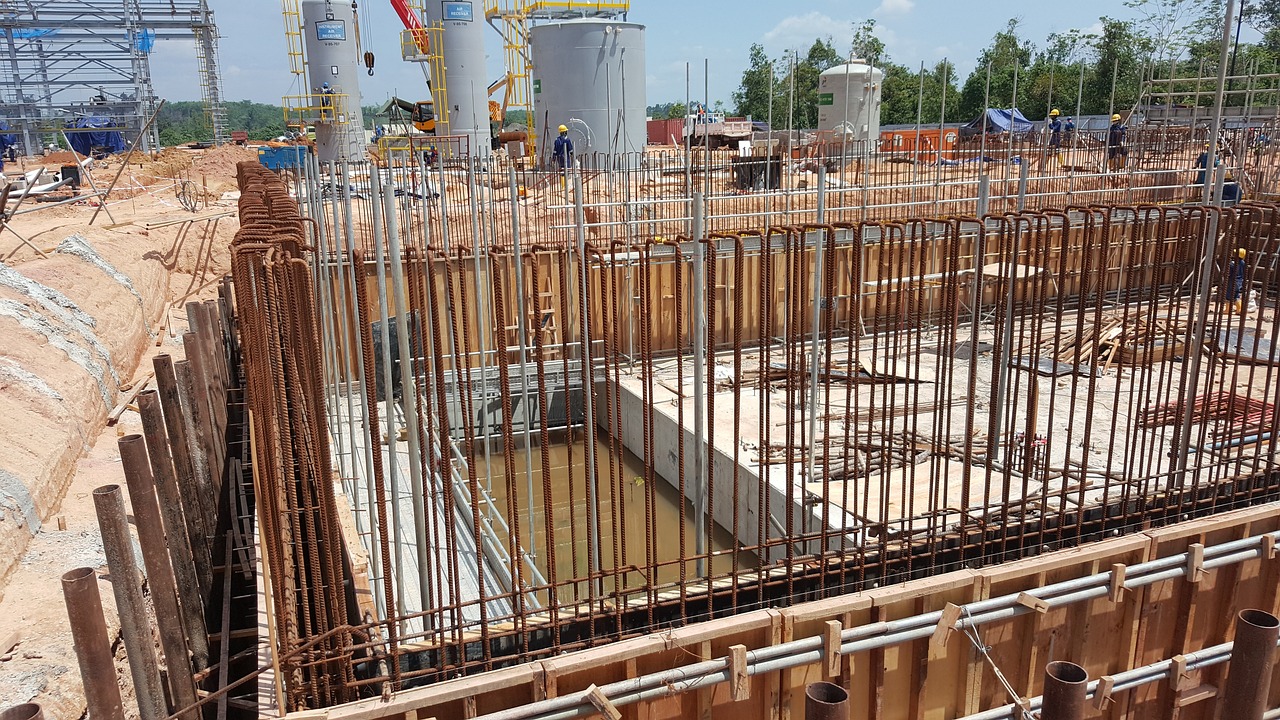
Linguistic Enigma
The Etruscans, an ancient civilization in Italy, made significant contributions to art, architecture, engineering, and trade. Despite their influence on Roman culture, their achievements are often overshadowed in history.
Etruscan art, characterized by vibrant frescoes, intricate gold jewelry, and detailed pottery, showcases their skill and creativity in various mediums.
Etruscan cities were adorned with impressive structures like the necropolises of Cerveteri and Tarquinia, showcasing their architectural prowess and urban planning.
The Etruscans were known for their advanced engineering techniques, including the construction of elaborate underground tombs and sophisticated drainage systems.
Thriving on their strategic location, the Etruscans established extensive trade networks across the Mediterranean, importing luxury goods and influencing regional economies.
Etruscan religious beliefs, centered around divination, rituals, and the afterlife, played a crucial role in shaping their society and influencing Roman religious practices.
With a hierarchical society comprising nobles, artisans, and slaves, the Etruscans had a complex social structure that influenced their governance and daily life.
The Etruscan language, which remains largely undeciphered, poses a challenge to understanding their culture and historical records, adding to their mysterious allure. Despite numerous efforts by scholars, the complexity of the language continues to baffle linguists and historians. The lack of a comprehensive understanding of Etruscan writing and grammar hinders the deciphering process, leaving much of their written texts and inscriptions shrouded in mystery.
The decline of the Etruscan civilization, attributed to factors like Roman conquest and internal strife, marked the end of their prominence, leaving behind a rich cultural legacy for future generations.
Stay tuned for some common questions about the Etruscans and their historical significance.
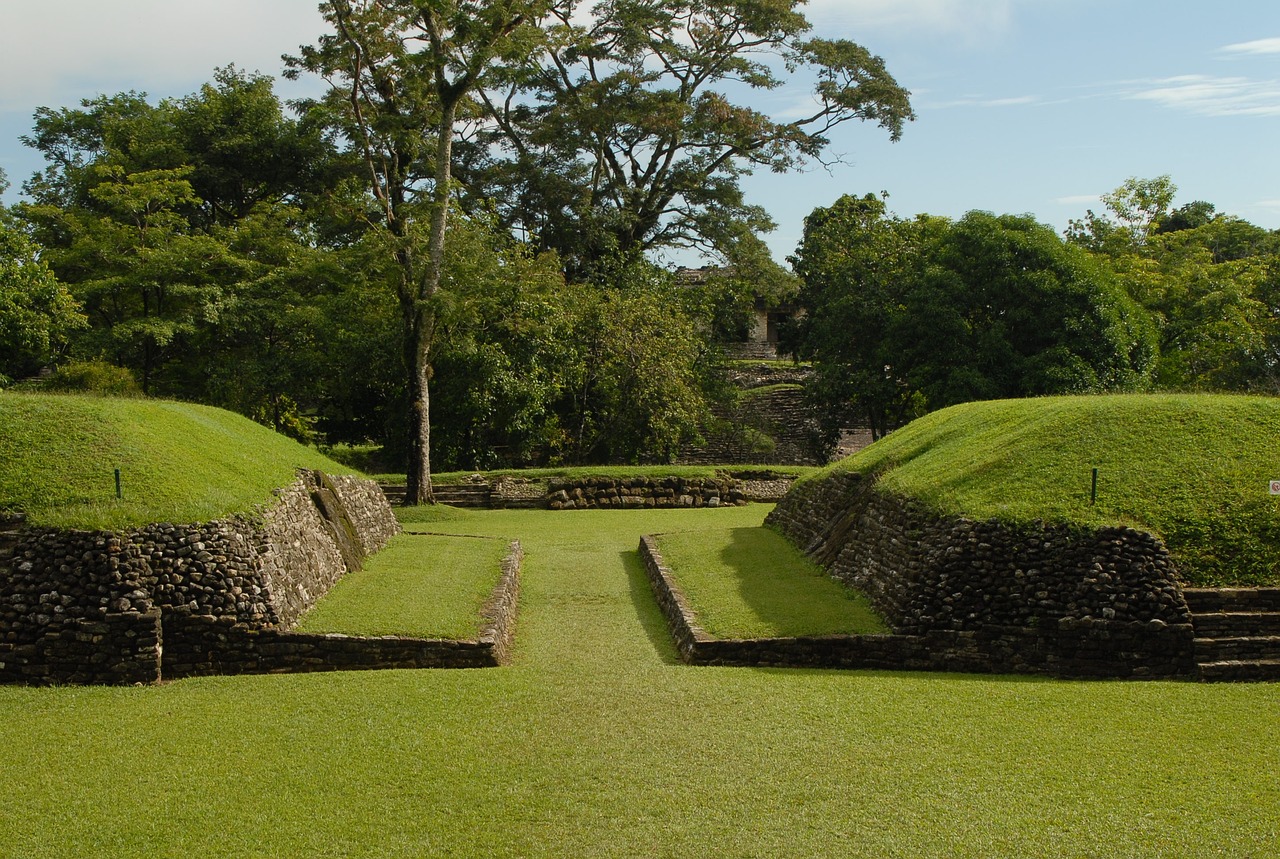
Decline and Legacy
As the Etruscan civilization entered a period of decline, various factors contributed to the waning of their once-powerful influence. The relentless expansion of the Roman Empire, with its military might and territorial ambitions, gradually eroded Etruscan autonomy and control over their territories. Internal conflicts and power struggles among Etruscan city-states further weakened their unity and ability to resist external pressures.
Despite their decline, the Etruscans left behind a lasting legacy that continues to fascinate historians and archaeologists. Their artistic achievements, architectural innovations, and engineering marvels stand as testaments to their ingenuity and creativity. The intricate tombs and vibrant frescoes that have survived through the ages offer glimpses into their rich cultural heritage and societal practices.
While the Etruscan civilization may have faded into obscurity over time, their influence on Roman culture and society endured. Elements of Etruscan art, architecture, and religious practices were absorbed and adapted by the Romans, shaping the development of their own civilization. The legacy of the Etruscans lives on in the remnants of their once-great cities and the echoes of their enigmatic language.
Today, the study of the Etruscans continues to captivate scholars and enthusiasts alike, seeking to unravel the mysteries of this ancient civilization and glean insights into their way of life. Their decline marked the end of an era, but their legacy endures as a reminder of the enduring impact of this remarkable culture on the history of Italy and the Mediterranean region.
Frequently Asked Questions
- What were the main contributions of the Etruscans to art?
The Etruscans excelled in various artistic mediums, creating vibrant frescoes, intricate gold jewelry, and detailed pottery that showcased their skill and creativity.
- What architectural marvels are associated with the Etruscans?
Etruscan cities featured impressive structures like the necropolises of Cerveteri and Tarquinia, highlighting their architectural prowess and urban planning abilities.
- How did the Etruscans influence trade and commerce in the ancient world?
The Etruscans established extensive trade networks across the Mediterranean, importing luxury goods and influencing regional economies due to their strategic location.
- What role did Etruscan religious beliefs play in shaping their society?
Etruscan religious practices, focusing on divination, rituals, and the afterlife, were integral to their society and also influenced Roman religious practices.
- Why is the Etruscan language considered a linguistic enigma?
The Etruscan language remains largely undeciphered, posing a challenge to understanding their culture and historical records, adding to their mysterious allure.
- What led to the decline of the Etruscan civilization?
The decline of the Etruscans was attributed to factors like Roman conquest and internal strife, marking the end of their prominence and leaving behind a rich cultural legacy.

